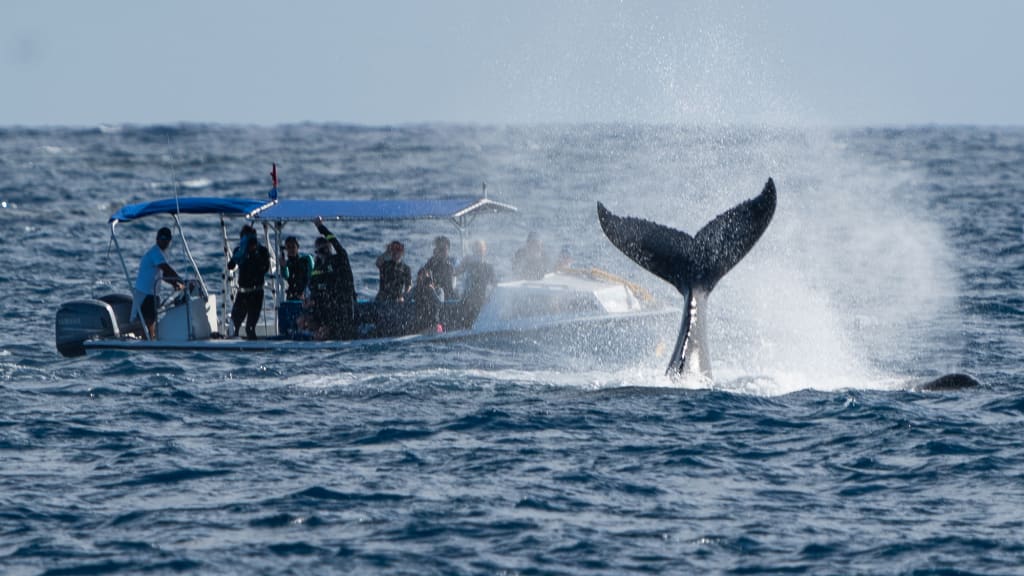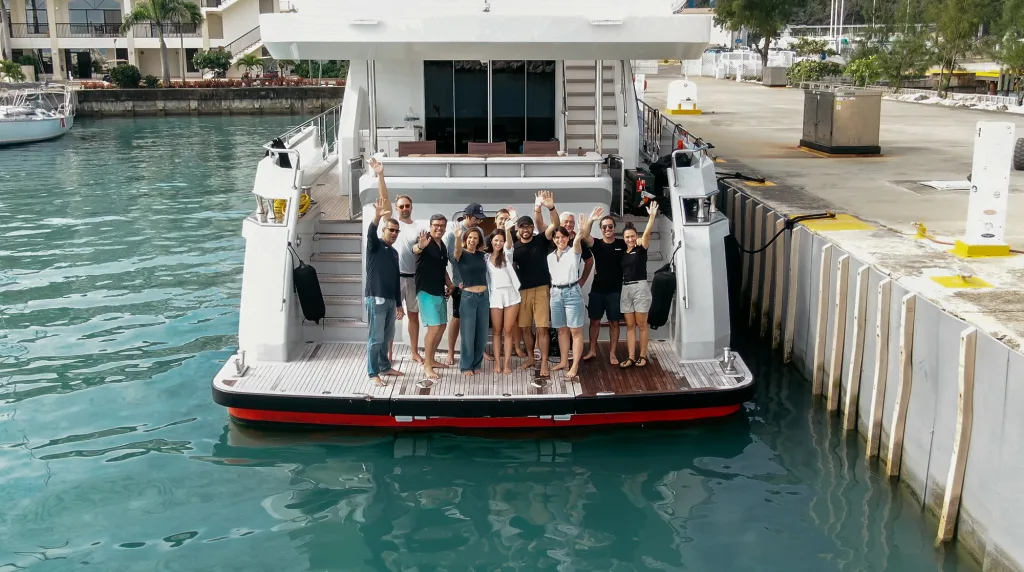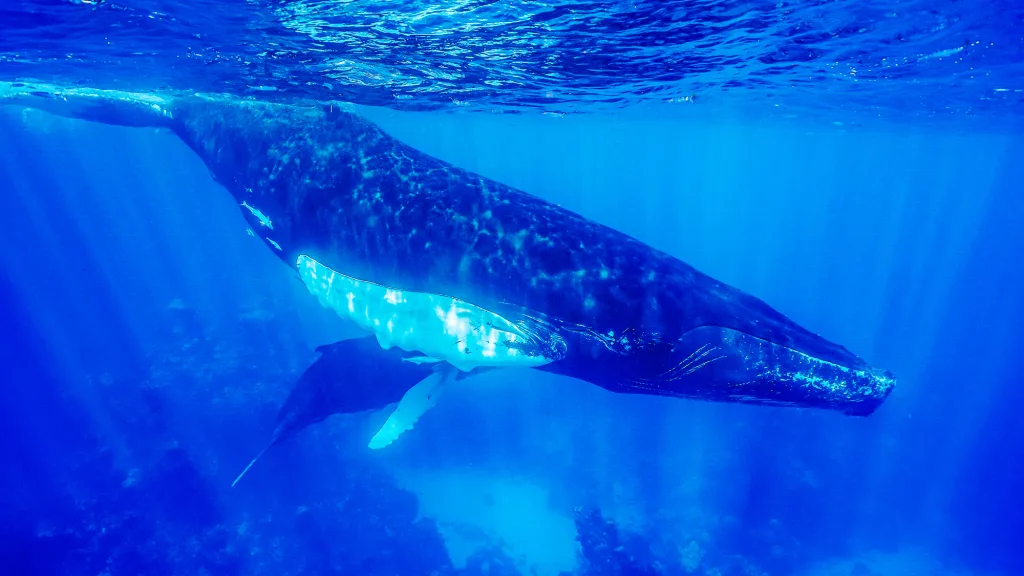Francesco Ferretti had a problem. His research expedition to track white sharks in the Mediterranean was suddenly adrift—the boat he’d arranged had vanished into the pandemic’s chaos of canceled plans and family emergencies. With scientific equipment packed and a team of seven researchers ready, the marine biologist found himself scanning the horizon for solutions.
It was then that Ferretti turned to six-year-old Yachts for Science, a matchmaking service linking wealthy boat owners with cash-strapped researchers. Soon, an owner of a private yacht offered to help.
Though weather conditions limited their time on the water and forced a relocation between countries, the expedition pressed on, with the yacht’s crew eagerly assisting with scientific operations. The unusual collaboration—luxury yacht meets marine research—proved successful despite the compromise of working on a vessel not specifically designed for scientific work.
“Whenever the crew was there, and we were actually doing science, they were available to help,” says Ferretti. “Sometimes you need hands, or you need other people to do stuff for you, to facilitate even the most trivial things, like organizing buckets or helping with sampling.”

Ferretti’s experience represents a growing movement in marine research, where luxury meets necessity. There are dozens of research vessels registered in the U.S., far more than any other country, including NOAA’s fleet of 15 research and survey ships, but availiablity can be scarce, and they aren’t cheap. Renting one of those vessels for an oceanographic expedition like this can cost upwards of $50,000 per day, according to Ferretti, a huge sum to raise for many scientists facing budget constraints. Meanwhile, the world’s ultra-wealthy use their multimillion-dollar yachts just a few weeks each year, with vessels sitting idle while still incurring substantial crew and maintenance costs.
Organizations like Yachts for Science, the International SeaKeepers Society, and the Pink Flamingo Society aim to bridge this gap, turning underutilized pleasure craft into platforms for discovery, whether by donating full research expeditions or simply collecting ocean data during regular voyages. For scientists, these collaborations provide vital access to remote, understudied regions; for yacht owners, they offer tax benefits, meaningful engagement for crew, and the satisfaction of contributing to ocean conservation without necessarily sacrificing privacy or comfort.
Rob McCallum, who helps facilitate these matchmaking arrangements through Yachts for Science, describes his organization as “the Tinder of the seas.” McCallum says they are on track to make about a dozen matches this year—amounting to about $1.4 million in vessel time for researchers—with plans to ramp up to hundreds of collaborations over the next few years, generating about $15 million in vessel time per year.
“We’re just approaching some of our funders at the moment asking for $600,000 a year for three years to actually fund taking the brakes off,” says McCallum. “My belief is that it’ll grow almost to an infinite extent, because once you have yachts getting out there and doing science, it will become the thing discussed at cocktail parties.”
The yacht owner who answered Ferretti’s call was Frank Peeters, a Belgian businessman whose vessel, Blue Titan, is what he calls “an adventure yacht” built for crossing oceans rather than hosting parties.
“The boat is not fit for that many people,” says Peeters of the 27-meter (88-foot) yacht. “Normally we sail with 6 people and the crew, and here we were sometimes 12, 13, 14 people.”

The expedition quickly faced challenges. After two days off the Tunisian coast, military officials intercepted the craft, claiming the research team lacked proper permissions. What followed was a bureaucratic struggle that lasted two weeks, with permits granted then mysteriously revoked. At one point, the boat was even briefly confiscated.
Despite complications costing Peeters between 10,000 and 20,000 euros (about $11,000 to $22,000) out of pocket, he has no regrets. “Would I do it again? Yes, I would do it again immediately,” he says. “I know they have to work on very small budgets, and we could help there.”
The scientists eventually redirected their shark-tracking expedition to Italian waters near Lampedusa, where they continued their research. While the team didn’t directly observe white sharks, they detected white shark environmental DNA (eDNA) at multiple sites, confirming the species’ presence in the area. This helped identify one of the last strongholds of the Mediterranean white shark population and marked a key step in launching a multi-institutional conservation program.
Peeters, who describes himself as “kind of retired” and sails Blue Titan with his wife about 16 weeks a year, now follows the researchers on Instagram, occasionally receiving video updates about their work. He was also acknowledged in the scientific paper that resulted from the expedition—a form of compensation he finds “definitely worthwhile.”

For researchers like Ferretti, these collaborations involve compromise. Scientists must adapt their methodologies for yacht environments, working carefully in spaces designed for luxury rather than research. But with U.K. research grant success rates dipping below 10% and U.S. government funding for the sciences increasingly uncertain, these adaptations reflect a persistent reality.
Beyond donating entire vessels for expeditions, yacht owners can contribute to science with minimal effort by installing simple data collection technology on their luxury vessels, which often venture into remote, understudied areas where scientific data is scarce.
“A lot of these boats are going into data-poor regions where there isn’t a lot of information,” says Roman Chiporukha, who co-runs Roman & Erica, a travel company for ultra-wealthy clients. “They could be mapping ocean floors where it hasn’t been done in the past.”
For yacht owners, these donations can also yield financial benefits. “When you’re donating the boat, it acts as a donation from a philanthropic institution,” says Chiporukha. “If I charter my boat for half a million dollars a week, I just wrote off half a million dollars [in taxes].”
Yachts are, of course, not typically associated with ocean protection or environmental stewardship: A 2018 study found that the world’s top 20 billionaires emitted around 8,000 metric tons of CO2 annually, compared to the average citizen’s carbon footprint of around 4 tons, or 15 tons in the United States; and that a staggering two-thirds of these emissions were created by their superyachts. And not all ocean inhabitants welcome the presence of luxury vessels: See the Iberian orcas that have taken to ramming yachts off the Spanish coast since 2020. Researchers have used eyewitness reports to study these encounters—another way yacht owners can contribute to marine science—and have speculated that the behavior may be juvenile whales using boat rudders as target practice for bluefin tuna.)
The luxury vessels participating in this scientific matchmaking vary widely. Turkey-based international company Bering Yachts found an opportunity not just in donating yacht time but in experiencing extraordinary research firsthand.
“I felt very privileged to be there,” says Bering Yachts founder Alexei Mikhailov, who joined an expedition last year to Silver Banks in the Dominican Republic, a whale sanctuary that permits only about 500 visitors annually. “When you’re surrounded by thousands of whales and mothers with babies, action around you 360 degrees, 24/7, it’s insane.”
The research trip utilized a customer’s 30-meter steel-and-aluminum yacht, positioning scientists 80 miles offshore in consistently rough seas. Despite 5- to 7-foot waves that would typically cause severe discomfort, the vessel’s dual stabilization systems created a comfortable platform for the researchers and their sensitive equipment.
For Mikhailov, whose early career was dedicated to environmental protection, the expedition reconnected him with scientific pursuit in a profound way that he hopes he can help replicate with Yachts for Science again.
“It was very interesting to talk to these people and share stories,” says Mikhailov. “I hope we’ll have another chance to visit a place like this in the future.”
Inicia sesión para agregar comentarios
Otros mensajes en este grupo.


Since it launched two years ago, Spotify’s AI DJ has been a one-way experience. It curates old favorites and helps listeners discover new tracks based on past listening experience and what similar




Artificial intelligence might be the future of the workplace, but companies that are trying to get a head start on that future are running into all sorts of problems.
Klarna and Duloingo

Now that the “100 men vs. one gorilla” debate has been settled, a new question is circulati
